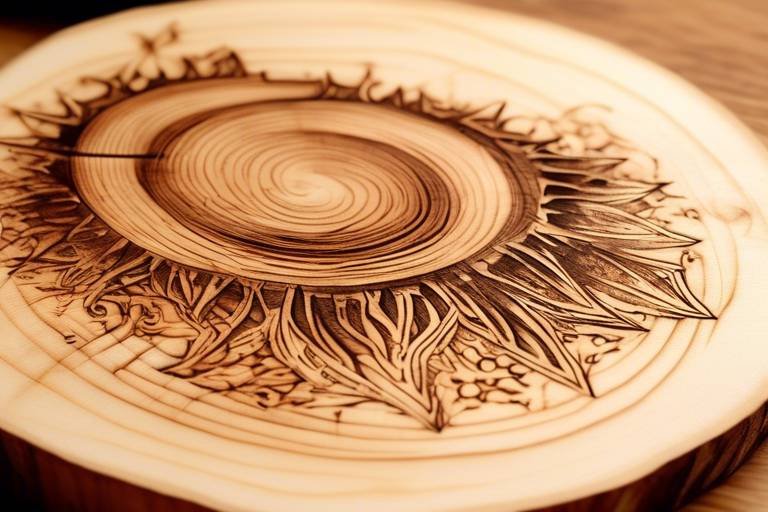A Comprehensive Guide to Making Wooden Clocks
Welcome to the fascinating world of wooden clock making! If you've ever gazed at a beautifully crafted clock and thought, "I wish I could make that," you're in the right place. This article provides an in-depth look at the art and craft of making wooden clocks, including the materials you'll need, the techniques to master, and tips that cater to both beginners and experienced woodworkers alike. Whether you're looking to create a stunning centerpiece for your home or a thoughtful gift for a loved one, crafting a wooden clock can be an incredibly rewarding experience. So, grab your tools, and let’s dive into the intricate yet enjoyable process of clock making!
Selecting the appropriate type of wood is crucial for both durability and aesthetics when crafting your wooden clock. Different wood varieties offer unique characteristics that can enhance the beauty and functionality of your clock. For instance, hardwoods like oak, maple, and cherry are popular choices due to their strength and fine grain, making them ideal for intricate designs. On the other hand, softer woods like pine or cedar can be easier to work with for beginners but may not offer the same longevity. Here’s a quick comparison of some popular wood types:
| Wood Type | Durability | Grain Pattern | Best For |
|---|---|---|---|
| Oak | High | Prominent | Intricate Designs |
| Maple | High | Fine | Modern Clocks |
| Cherry | Medium | Smooth | Elegant Pieces |
| Pine | Low | Simple | Beginner Projects |
When choosing your wood, consider not only the look you want to achieve but also the tools you have at your disposal. Different woods may require different cutting and finishing techniques, which can affect your project’s timeline and outcome.
A well-equipped workshop is vital for crafting wooden clocks. The right tools will not only make your job easier but will also ensure that your clock turns out as beautifully as you envisioned. Essential tools for clock making include:
- Saws: A scroll saw or band saw is ideal for intricate cuts.
- Drills: A drill press can help you create precise holes for clock mechanisms.
- Sanders: To smooth out edges and surfaces, a random orbital sander is a great choice.
- Clamps: These are crucial for holding pieces together while glue sets.
Investing in quality tools can make a significant difference in the precision and quality of your work. However, you don’t need to break the bank—many skilled woodworkers have created stunning pieces with just a handful of basic tools!
Understanding the advantages and disadvantages of hand tools versus power tools can greatly influence your clock-making process. Hand tools offer greater control and fine detail, while power tools can significantly speed up the clock-making process. Here’s a brief overview:
Hand tools allow for a more tactile experience, giving you a sense of connection to your work. They require more effort, but this can lead to greater satisfaction in the final product. Plus, they often enable you to create intricate details that power tools might overlook.
On the flip side, power tools can enhance efficiency. They’re particularly useful for repetitive tasks, like cutting multiple pieces of wood to the same size. While they may lack the finesse of hand tools, the time saved can be invaluable, especially if you’re working on multiple clocks!
Safety is paramount in any woodworking project. Always wear protective gear, such as goggles and ear protection, and ensure your workspace is clean and organized. Here are some essential safety tips:
- Always keep your fingers away from the blade when using saws.
- Use clamps to secure your workpiece instead of holding it by hand.
- Ensure proper ventilation when sanding or finishing wood.
By following these safety measures, you can enjoy the clock-making process while minimizing the risk of accidents.
Creating a unique design is one of the most enjoyable aspects of clock making. This is where your creativity can truly shine! Consider the style of your home and the purpose of the clock. Do you want something rustic, modern, or perhaps a blend of both? Look for inspiration in nature, architecture, or even in the clocks of others. Sketching your ideas can help clarify your vision before you begin the actual crafting process.
Before cutting any wood, it's essential to sketch your design. This not only helps visualize your clock but also allows you to plan the dimensions and layout effectively. Take your time with this step; a well-thought-out plan can save you from costly mistakes down the line.
Adding personal elements can make your clock truly one-of-a-kind. Think about incorporating unique features such as engraved designs, custom colors, or even family photos. These touches will not only enhance the aesthetic appeal but also infuse your personality into the piece.
Once the pieces are ready, the assembly process begins. This is where all your hard work comes together! Follow your plan closely, and take your time to ensure everything fits perfectly. A well-assembled clock not only looks better but also works more reliably.
The clock mechanism is the heart of your creation. Choosing the right mechanism is crucial, as it affects the clock's accuracy and overall functionality. Ensure you follow the manufacturer's instructions for installation to get it right the first time!
A great finish can elevate your wooden clock's appearance. Consider using a wood stain or sealant to enhance the natural beauty of the wood while providing protection against wear and tear. The finishing process is your final opportunity to make your clock shine, so don’t rush it!
Q: What type of wood is best for beginners?
A: Pine is often recommended for beginners due to its softness and ease of handling.
Q: How long does it take to make a wooden clock?
A: The time required can vary greatly depending on the complexity of the design, but most projects can be completed in a weekend.
Q: Do I need special tools to make a wooden clock?
A: While basic woodworking tools are essential, you don’t need anything overly specialized. A saw, drill, and sander are typically sufficient.
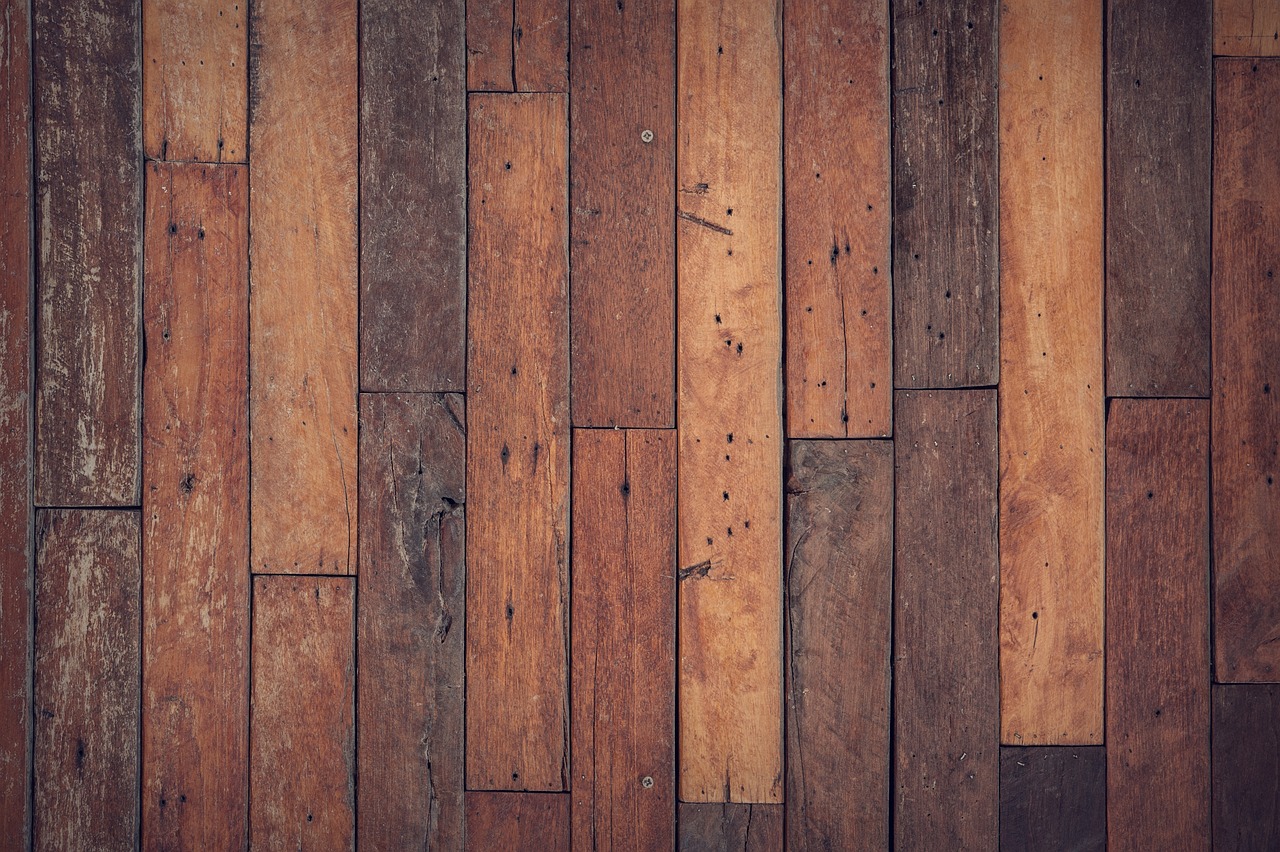
Choosing the Right Wood
When embarking on your journey to craft a stunning wooden clock, one of the most critical decisions you'll face is choosing the right type of wood. The wood you select can significantly impact both the durability and aesthetics of your clock. Imagine spending hours meticulously crafting your masterpiece only for it to warp or crack because of poor material choices! Therefore, let's dive into the various wood varieties that are not only beautiful but also suitable for clock making.
First off, it's essential to understand that different woods possess unique characteristics that can affect your clock's performance and appearance. For instance, hardwoods like oak, maple, and walnut are popular choices due to their strength and resistance to wear. Oak, with its distinctive grain patterns, can add an element of rustic charm to your clock, while maple offers a smooth finish that can be stained or painted to match your design vision. On the other hand, softwoods such as pine and cedar are lighter and easier to work with, making them ideal for beginners or those looking to create a more casual, contemporary clock.
Here’s a quick breakdown of some common wood types and their suitability for clock making:
| Wood Type | Characteristics | Best For |
|---|---|---|
| Oak | Strong, durable, beautiful grain | Traditional designs, outdoor clocks |
| Maple | Hard, light-colored, smooth finish | Modern, minimalist designs |
| Walnut | Rich color, fine grain | Elegant, high-end clocks |
| Pine | Lightweight, easy to work with | Beginner projects, casual designs |
| Cedar | Resistant to moisture, aromatic | Outdoor clocks, rustic themes |
As you can see, the choice of wood can set the tone for your entire clock project. However, it’s not just about aesthetics; consider the environmental factors as well. If you're planning to place your clock in a humid area, opt for woods like cedar that naturally resist moisture. Meanwhile, if you're looking to create a clock for a dry indoor space, hardwoods such as maple or walnut will serve you well.
Another aspect to consider is the grain pattern. The grain can add a unique character to your clock, and understanding how different woods look can guide your choice. For example, if you want a clock that stands out, woods with pronounced grain patterns like oak can be eye-catching. Conversely, if you prefer a more subtle look, smooth woods like maple might be the way to go.
Ultimately, the wood you choose for your clock should resonate with your personal style and the message you want your clock to convey. Whether you lean towards the rustic charm of oak or the sleek elegance of walnut, selecting the right wood is the first step in creating a piece that is not only functional but also a beautiful addition to your space.

Essential Tools for Clock Making
When it comes to crafting wooden clocks, having the right tools is not just a luxury—it's a necessity. Imagine trying to bake a cake without a whisk or a mixer; it would be quite the challenge, right? Similarly, the right tools can make your clock-making journey smoother and more enjoyable. Whether you're a seasoned woodworker or just starting, understanding which tools to use can significantly impact the quality of your finished product.
First off, let’s talk about the **fundamental tools** you’ll need. These include both hand tools and power tools, each serving a unique purpose in the woodworking process. Hand tools, like chisels and hand saws, offer you the ability to work with precision and control. On the other hand, power tools such as circular saws and drills can save you a lot of time and effort. It’s essential to find a balance between the two, as each has its own benefits.
Here’s a quick overview of some **essential tools** for clock making:
| Tool | Purpose |
|---|---|
| Hand Saw | Cutting wood into desired shapes and sizes |
| Chisel | Shaping and detailing wood |
| Drill | Making holes for clock mechanisms and mounting |
| Sander | Smoothing surfaces for a polished finish |
| Clamps | Holding pieces together during assembly |
But wait, there's more! You’ll also need some **specialty tools** that can elevate your clock-making game. For instance, a **router** can help you create intricate designs and grooves, while a **band saw** can cut curves and irregular shapes with ease. If you plan to embellish your clock with unique features, consider investing in a **scroll saw** for those delicate cuts. Remember, the right tools can help you achieve that wow factor in your designs!
Moreover, let’s not forget about **safety gear**. Protecting yourself while working is paramount. Always wear safety glasses to shield your eyes from sawdust and wood chips, and use hearing protection when operating loud power tools. A dust mask can also be a lifesaver, especially when sanding or cutting. Safety should never take a backseat; it’s an integral part of woodworking.
In conclusion, assembling a toolkit for clock making is about more than just having a collection of tools—it's about having the **right tools** for the job. As you gather your equipment, think about your specific needs and how each tool will help you achieve your vision. The journey of crafting a wooden clock can be incredibly rewarding, and with the right tools at your disposal, you’ll be well on your way to creating a stunning timepiece that showcases your craftsmanship.
- What is the most important tool for clock making? While it depends on your specific project, a good quality hand saw and drill are often considered essential for most clock-making tasks.
- Can I use regular wood for clock making? Yes, but it's best to choose hardwoods like oak or maple for durability and aesthetics.
- How much should I budget for tools? A basic toolkit can start at around $100, but investing in quality tools will pay off in the long run.
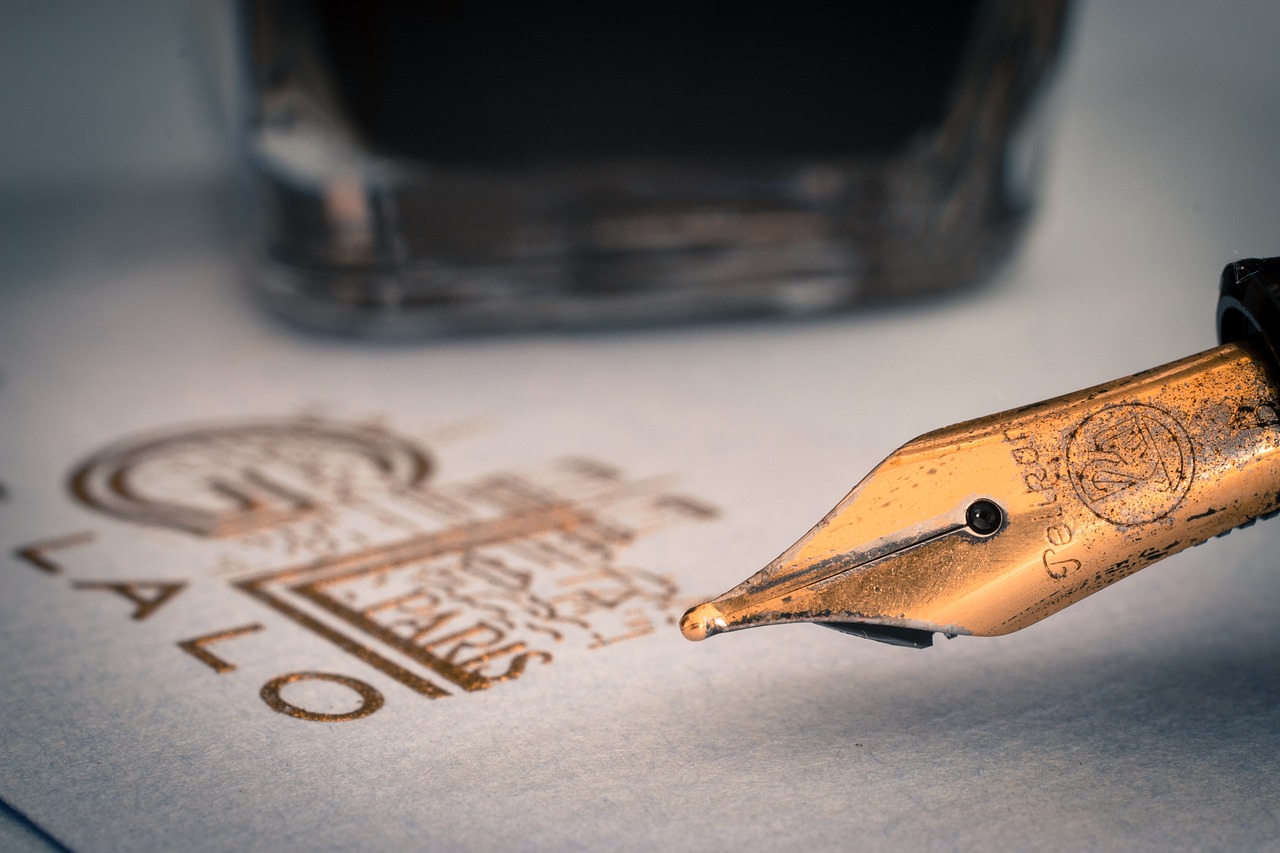
Hand Tools vs. Power Tools
When it comes to crafting wooden clocks, the debate between hand tools and power tools is as old as time itself—pun intended! Each type of tool has its own set of advantages and potential drawbacks, and understanding these can help you make the best choice for your clock-making journey. Let’s dive into the world of woodworking tools and see how they stack up against each other.
Hand tools, such as chisels, hand saws, and planes, offer a level of control that many woodworkers cherish. Imagine sculpting a piece of wood as an artist would with a chisel on marble; the precision and tactile feedback allow for meticulous detail. This is particularly beneficial when crafting intricate designs or fine details on your clock. Not to mention, hand tools can be more affordable and require less maintenance than their electric counterparts. Plus, they are often quieter, allowing for a more meditative crafting experience. However, the downside is that they can be more physically demanding and time-consuming.
On the flip side, power tools like table saws, routers, and drills can significantly speed up the clock-making process. These tools are designed to handle larger tasks quickly and efficiently, making them a fantastic option for those who may be short on time or working on multiple projects. The precision of power tools can also be impressive, especially with features like laser guides and adjustable settings. However, the initial investment can be higher, and there’s a learning curve involved in mastering these machines. Additionally, the noise and dust generated can be off-putting for some woodworkers.
To help you visualize the differences, here’s a quick comparison:
| Feature | Hand Tools | Power Tools |
|---|---|---|
| Control | High | Moderate |
| Speed | Slow | Fast |
| Cost | Generally lower | Generally higher |
| Noise Level | Quiet | Loud |
| Maintenance | Less frequent | More frequent |
Ultimately, the choice between hand tools and power tools boils down to your personal preferences and the specific requirements of your clock-making project. Some woodworkers even find joy in combining both methods! For instance, you might use power tools for rough cuts and then switch to hand tools for the finer details. This hybrid approach can offer the best of both worlds, allowing for efficiency without sacrificing the artistry that comes from hand craftsmanship.
So, whether you’re a die-hard fan of hand tools or a power tool enthusiast, remember that the most important aspect of clock making is not just the tools you use, but the passion and creativity you bring to your work. After all, every tick of the clock is a testament to the craftsmanship behind it!
- Can I use only hand tools for clock making? Yes, many woodworkers successfully create beautiful clocks using only hand tools, though it may take more time and effort.
- Are power tools safer than hand tools? Both types of tools can be safe when used correctly. It’s essential to follow safety guidelines and wear appropriate protective gear.
- Which tools should I start with as a beginner? A good starting point includes a few essential hand tools like a saw, chisel, and hammer, along with a drill for basic tasks.
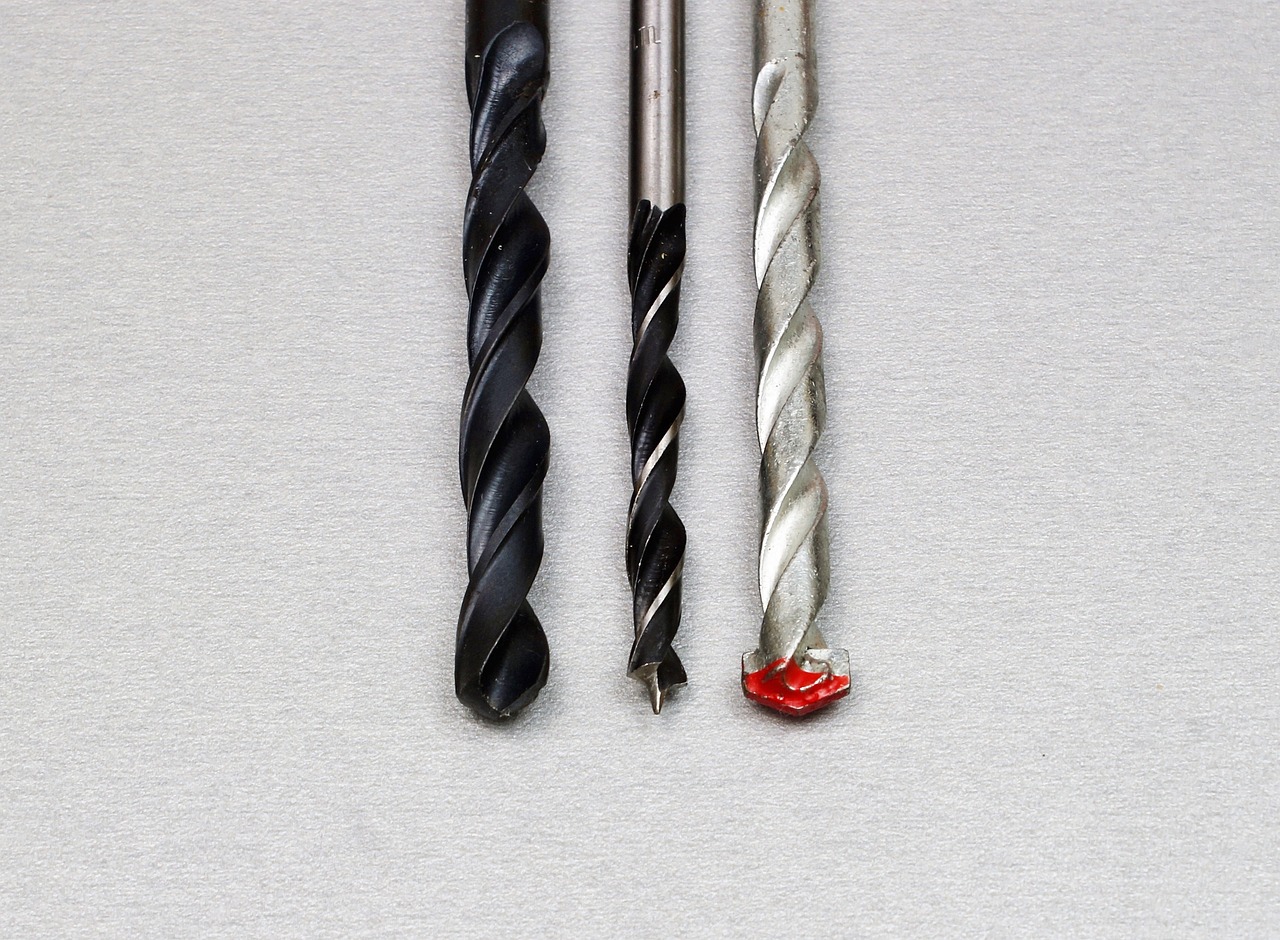
Benefits of Hand Tools
When it comes to crafting wooden clocks, hand tools hold a special place in the heart of many woodworkers. While power tools have their own advantages, the benefits of using hand tools can be quite compelling, especially for those who appreciate the art of woodworking. One of the most significant advantages is the level of control that hand tools provide. Imagine carving intricate designs or making precise cuts with a tool that feels like an extension of your own hand. This tactile connection allows for greater detail and nuance in your work, which is essential when creating a unique clock that stands out.
Another major benefit is the quietness and meditative quality of using hand tools. Unlike the loud whirring of power tools, hand tools invite a sense of calm and focus. This can transform the woodworking process into a peaceful experience, allowing you to immerse yourself fully in your craft. Many woodworkers find that this tranquility enhances their creativity, leading to more innovative designs and solutions.
Moreover, hand tools often require less maintenance compared to their power counterparts. While power tools may need regular servicing and can be susceptible to malfunctions, hand tools, when cared for properly, can last a lifetime. A well-maintained chisel or hand saw can become a cherished part of your toolbox, often passed down through generations. This longevity not only makes hand tools a cost-effective choice but also adds a sentimental value to your woodworking journey.
Additionally, using hand tools can foster a deeper understanding of the materials you’re working with. When you rely on your hands and basic tools, you become more attuned to the wood's grain, texture, and characteristics. This intimate knowledge can significantly enhance your ability to make informed decisions about your designs and techniques. You might find yourself appreciating the beauty of each piece of wood, recognizing how its unique qualities can influence the final product.
Lastly, hand tools can be incredibly versatile. They can be used for a wide range of tasks, from rough shaping to fine detailing, making them suitable for various woodworking projects beyond just clock making. Whether you're chiseling out a delicate pattern or sanding a surface to perfection, hand tools can adapt to your needs. This versatility is invaluable for woodworkers who enjoy exploring different styles and techniques.
In summary, while power tools may offer speed and efficiency, the benefits of hand tools—such as enhanced control, a peaceful workflow, low maintenance, a deeper connection with the material, and versatility—make them an essential part of the clock-making process. So, the next time you embark on a woodworking project, consider reaching for those hand tools and experience the magic they bring to your craft.
- What are some essential hand tools for clock making? Essential hand tools include chisels, hand saws, files, and sandpaper. Each tool serves a specific purpose in achieving precision in your clock design.
- Can beginners use hand tools effectively? Absolutely! Hand tools are great for beginners as they allow for better control and understanding of woodworking techniques.
- How do I maintain my hand tools? Keep your tools clean, sharpened, and stored properly to ensure their longevity. Regular maintenance will enhance their performance.
- Are hand tools more cost-effective than power tools? Generally, yes! Hand tools require a lower initial investment and can last a lifetime with proper care, making them a wise choice for many woodworkers.
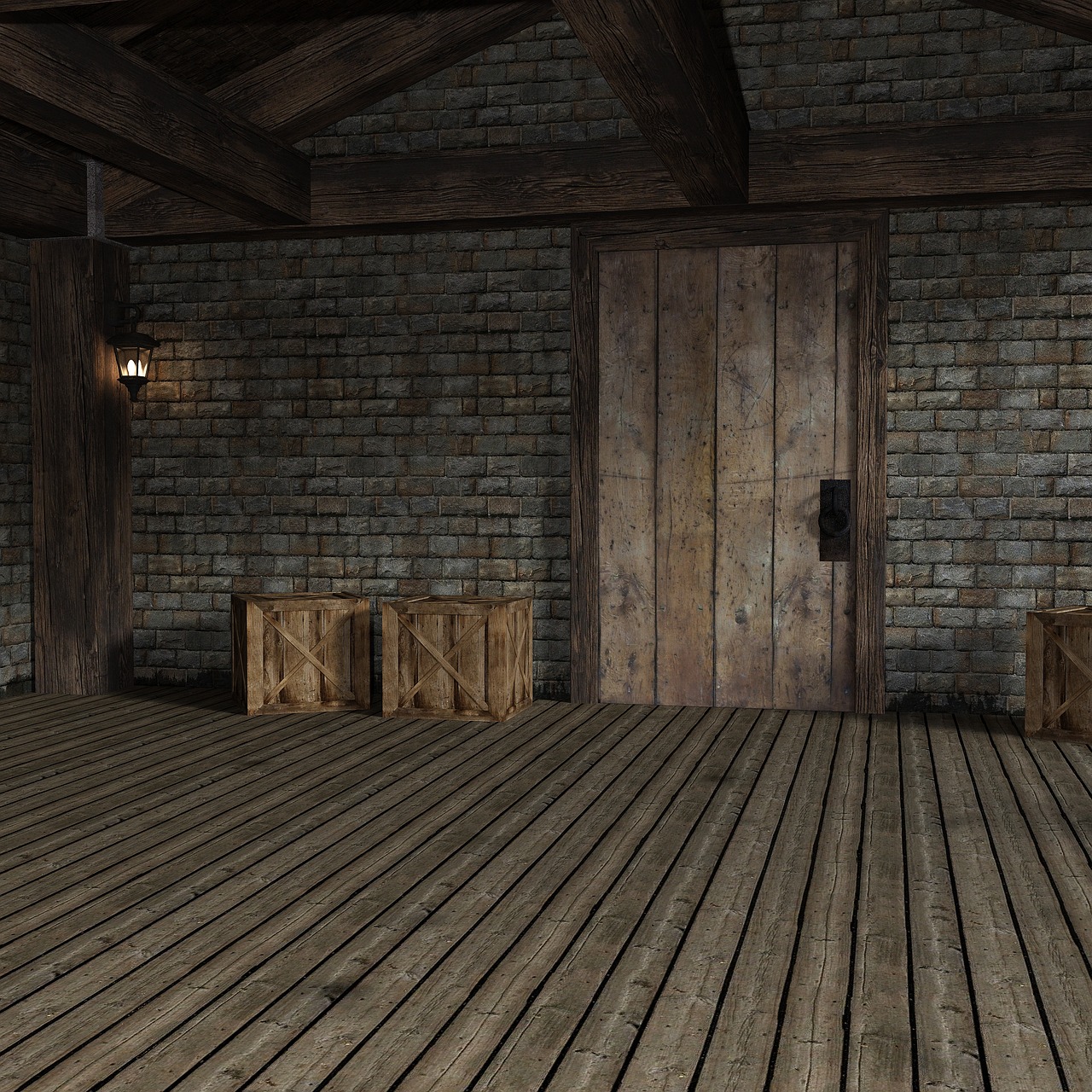
Advantages of Power Tools
When it comes to crafting wooden clocks, the choice between hand tools and power tools can often feel like a tug-of-war. However, the are hard to overlook, especially for those looking to enhance their woodworking experience. One of the most significant benefits is the speed at which tasks can be completed. Imagine trying to cut through a thick piece of hardwood with a hand saw; it’s a labor-intensive process that can take a considerable amount of time. In contrast, a power saw can slice through that same wood in mere seconds, allowing you to move on to the next exciting phase of your project.
Moreover, power tools offer a level of precision that can elevate the quality of your work. For instance, using a power sander can create a smooth finish that would be difficult to achieve with sandpaper alone. This precision is vital when you’re assembling intricate clock components, ensuring that everything fits together seamlessly. Additionally, power tools often come equipped with features that help maintain consistent measurements, which is essential in clock making where every detail counts.
Let's not forget about ergonomics. Power tools are typically designed with user comfort in mind, reducing the strain on your hands and arms. This is particularly beneficial during long woodworking sessions. The ease of use offered by power tools can also be a game-changer for beginners, as they allow for a smoother learning curve. Instead of struggling with manual techniques, new woodworkers can focus on the creative aspects of clock making, such as design and personalization.
Another advantage is the versatility of power tools. Many of them can perform multiple functions, which means you can invest in a single tool that can handle various tasks. For example, a router can be used for hollowing out areas, creating decorative edges, and even making joints. This versatility not only saves money but also minimizes the clutter in your workshop.
In summary, while hand tools have their place in the woodworking world, power tools provide a range of advantages that can significantly enhance your clock-making experience. From speed and precision to ergonomics and versatility, they are invaluable assets for both novice and experienced woodworkers alike. So, whether you're whipping up a quick project or diving into a detailed clock design, power tools can make your journey smoother and more enjoyable.

Safety Measures in Woodworking
This article provides an in-depth look at the art and craft of making wooden clocks, including materials, techniques, and tips for both beginners and experienced woodworkers.
Selecting the appropriate type of wood is crucial for durability and aesthetics. This section explores different wood varieties and their suitability for clock making.
A well-equipped workshop is vital for crafting wooden clocks. Here, we discuss the essential tools you'll need, from saws to drills, to achieve precision in your work.
Understanding the advantages and disadvantages of hand tools versus power tools can influence your clock-making process. This section compares both options for different woodworking techniques.
Hand tools offer greater control and fine detail in woodworking. This part highlights the unique advantages of using hand tools in clock making.
Power tools can significantly speed up the clock-making process. This section discusses how they can enhance efficiency while still maintaining quality.
Safety is paramount in any woodworking project, especially when it comes to crafting beautiful wooden clocks. As you dive into this rewarding hobby, it's essential to equip yourself with the right knowledge and practices to keep both you and your workspace safe. Think of your workshop as a sanctuary for creativity, but like any sacred space, it requires rules and precautions to protect its inhabitants.
First and foremost, always wear appropriate personal protective equipment (PPE). This includes safety goggles to shield your eyes from flying debris, ear protection to guard against the noise of power tools, and a dust mask to prevent inhalation of harmful particles. It's like dressing up for a party; you want to look good, but more importantly, you want to feel safe and comfortable.
Another critical aspect of safety is maintaining a clean and organized workspace. Clutter can lead to accidents, so make it a habit to keep your area tidy. Regularly sweep up sawdust, and ensure that tools are returned to their designated spots after use. Imagine trying to cook in a messy kitchen; the same principle applies here—an orderly space fosters creativity and minimizes risks.
Additionally, understanding your tools is vital. Each tool has its quirks and requires specific handling. For instance, when using saws, always keep your hands away from the blade and use push sticks for narrow cuts. It's like driving a car; knowing the controls and respecting their power can prevent mishaps.
Lastly, never underestimate the importance of taking breaks. Woodworking can be an engrossing activity, but fatigue can lead to mistakes. Step back, stretch, and refresh your mind. Think of it as recharging your batteries; a well-rested mind is sharper and more focused.
By following these safety measures, you can enjoy the fulfilling journey of clock making while minimizing risks. Remember, safety and creativity go hand in hand, so don’t skimp on precautions!
Creating a unique design is one of the most enjoyable aspects of clock making. This section covers design principles and inspiration sources to help you conceptualize your clock.
Before cutting any wood, it's important to sketch your design. This part discusses effective planning techniques to visualize your clock and avoid costly mistakes.
Adding personal elements can make your clock truly one-of-a-kind. Here, we explore ways to incorporate unique features and embellishments into your clock design.
Once the pieces are ready, the assembly process begins. This section provides step-by-step guidance on how to put together your wooden clock efficiently and correctly.
The clock mechanism is the heart of your creation. This part explains how to choose and install the right mechanism for your wooden clock.
A great finish can elevate your wooden clock's appearance. This section discusses various finishing techniques to enhance the beauty and longevity of your clock.
- What type of wood is best for making clocks? - Hardwoods like oak, maple, and walnut are ideal due to their durability and aesthetic appeal.
- Do I need special tools for clock making? - While basic woodworking tools suffice, having specialized tools like a clock mechanism and drill will enhance your project.
- How long does it take to make a wooden clock? - The time varies based on complexity, but most projects can be completed in a weekend.
- Can I customize my clock design? - Absolutely! Personal touches make your clock unique and special.

Designing Your Clock
Creating a unique design is one of the most enjoyable aspects of clock making. It's where your imagination can truly run wild, transforming a simple piece of wood into a stunning timepiece that reflects your personality and style. Whether you envision a sleek modern look or a rustic vintage vibe, the design phase is your canvas. So, how do you get started? First, think about what inspires you. Are there shapes, colors, or themes that resonate with your aesthetic? This is your opportunity to let your creativity shine!
When embarking on your clock design journey, consider the design principles that can guide you. These principles include balance, contrast, emphasis, movement, pattern, rhythm, and unity. For instance, achieving balance in your design ensures that no single element overwhelms the others, creating a harmonious look. Contrast can be used to make certain features stand out, like using dark wood against lighter tones. Emphasis might come from a striking clock face or unique hands that draw the eye.
Another key aspect is to sketch your ideas. Before you even touch a piece of wood, grab a pencil and paper and start doodling! Sketching helps you visualize your clock and can save you from costly mistakes later on. It’s like drafting a blueprint for a house; you wouldn’t want to start building without one! As you sketch, think about the size and shape of your clock. Do you want a round, square, or perhaps an asymmetrical design? Each shape can convey a different feel and functionality.
Incorporating personal touches is what truly makes your clock one-of-a-kind. This could involve adding elements that are significant to you, such as:
- Engravings of meaningful quotes or dates
- Using reclaimed wood with a history
- Incorporating colors that hold personal significance
As you finalize your design, keep in mind the materials you plan to use. Different woods have unique characteristics and can affect the overall aesthetic of your clock. For example, oak offers strength and a beautiful grain, while cherry wood provides a warm, rich hue. Think about how these materials will interact with your design choices.
Finally, don’t forget to gather inspiration from various sources. Browse through woodworking magazines, visit galleries, or even explore online platforms like Pinterest or Instagram. These resources can spark new ideas and help you refine your design. Remember, the goal is to create something that not only tells time but also tells a story—your story!
Q: How do I choose the right design for my clock?
A: Start by considering your personal style and the space where the clock will hang. Sketch various ideas and think about the materials you want to use. Gathering inspiration from existing designs can also help.
Q: Can I use different types of wood in one clock?
A: Absolutely! Mixing different types of wood can add visual interest and depth to your design. Just make sure the woods complement each other in terms of color and grain.
Q: What tools do I need for designing my clock?
A: Basic tools include a pencil and paper for sketching, a ruler for measurements, and possibly design software if you prefer digital planning. The more detailed your plan, the easier the building process will be!

Sketching and Planning
When it comes to making wooden clocks, are not just optional steps; they are the foundation of your entire project. Imagine setting out on a road trip without a map – you could end up lost or, worse, in the wrong destination! Similarly, having a well-thought-out sketch can save you from costly mistakes and wasted materials. So, let’s dive into how you can effectively sketch and plan your wooden clock design.
First off, grab some paper and a pencil. It doesn’t have to be fancy; even a simple notepad will do. Start by brainstorming ideas. Think about the style of clock you want to create. Will it be modern, rustic, or perhaps something whimsical? Consider the size, shape, and any unique features you’d like to incorporate. This is where you can really let your creativity flow! You might find inspiration in nature, architecture, or even other clock designs.
Once you have a general idea, it’s time to put pencil to paper. Begin with rough sketches. Don’t worry about making it perfect; the goal here is to visualize your concept. You can create multiple sketches to explore different designs. For instance, you might want to try various face shapes, number placements, or even decorative elements. As you sketch, keep in mind the dimensions of your wood pieces. It’s essential to ensure that everything will fit together seamlessly once you start cutting.
After you’ve settled on a design, it’s crucial to create a more detailed plan. This is where you should include measurements and specific dimensions for each component of your clock. A simple table can help organize this information:
| Component | Dimensions (inches) | Notes |
|---|---|---|
| Clock Face | 10 x 10 | Consider using a contrasting color for numbers. |
| Base | 12 x 2 | Ensure stability; thicker wood is recommended. |
| Hands | 5, 7, and 8 | Choose a lightweight material for smooth movement. |
This table not only keeps your dimensions organized but also allows you to think critically about each part of your clock. Are there any elements that need to be adjusted? Do you have the right materials for each section? This planning phase is your opportunity to iron out any issues before you start cutting wood.
Another important aspect of planning is to consider the assembly process. Think about how the pieces will fit together. Will you need to drill holes for the clock mechanism? How will you attach the hands? Mapping this out can save you time and frustration later on. You might even want to create a step-by-step outline of the assembly process, so you have a clear path to follow as you work.
Finally, don’t forget to incorporate personal touches into your design! Whether it’s a special engraving, a unique paint color, or a specific wood finish, these details will make your clock truly one-of-a-kind. As you sketch, think about how you can infuse your personality into the project. After all, this clock will not only tell time but also serve as a reflection of your creativity and craftsmanship.
In conclusion, sketching and planning are not just preliminary steps in making wooden clocks; they are essential phases that can significantly enhance the quality of your final product. By taking the time to brainstorm, sketch, and plan meticulously, you set yourself up for a successful and enjoyable woodworking experience. So, grab your tools and let your imagination run wild!
- How important is sketching before starting a project? Sketching helps visualize your design and prevents mistakes during the building process.
- Can I use software for designing my clock? Absolutely! Many woodworkers use design software for more precise measurements and layouts.
- What if I make a mistake in my sketch? No worries! Sketching is a process, and adjustments can easily be made. Just keep refining until you’re satisfied.

Incorporating Personal Touches
When it comes to making your wooden clock, adding personal touches can transform a simple timepiece into a cherished heirloom. Think of it as dressing up your clock in its Sunday best! Personalization not only reflects your style but also tells a story—your story. So, how do you go about making your clock uniquely yours? Let’s dive into some creative ideas!
First off, consider the design elements. You can choose to carve intricate patterns or designs into the wood, which can add a layer of depth and character. For instance, if you have a love for nature, why not incorporate leaves or floral motifs? You could even use a wood burner to etch designs that resonate with you. This is a fantastic way to showcase your artistic flair and make your clock a true representation of your personality.
Another fantastic idea is to play around with color and finish. Staining the wood can dramatically change its appearance, allowing you to match it with your home decor or personal taste. Whether you prefer a rustic, natural look or a sleek, modern finish, the choice is yours. Additionally, you can use paints to add vibrant colors or even create a gradient effect. Just imagine a clock that not only tells time but also serves as a stunning piece of art on your wall!
Don't forget about functional personalization! You can choose unique clock hands that stand out, perhaps shaped like a leaf or a star, which can add an unexpected twist to your clock. Moreover, consider incorporating a photo frame into your design. This way, your clock can hold a cherished memory, making it even more special. You could even use photographs of family or friends, or images from a memorable vacation, turning your clock into a sentimental piece.
Furthermore, think about the material combinations. Mixing different types of wood can create a striking contrast and add visual interest. For example, pairing a dark walnut with light maple can create a stunning juxtaposition. You could even incorporate other materials, such as metal or glass, to enhance the overall design. This blend of materials not only adds to the aesthetic but also showcases your creativity and resourcefulness.
Lastly, don't shy away from functional embellishments. Adding features like a built-in shelf for small items or a small chalkboard section for notes can make your clock not just a timekeeper but a multifunctional piece. This way, your clock can serve various purposes while still being a beautiful focal point in your space.
Incorporating personal touches into your wooden clock is all about expressing yourself and making it a reflection of your personality. Whether it’s through design, color, materials, or functionality, the possibilities are endless. So grab your tools, unleash your creativity, and let your wooden clock tell your unique story!
- What type of wood is best for making a clock?
Hardwoods like oak, maple, and walnut are excellent choices due to their durability and attractive grain patterns.
- Do I need special tools to make a wooden clock?
While basic woodworking tools are sufficient, having a scroll saw, drill, and sander can make the process easier and more precise.
- How can I ensure my clock keeps accurate time?
Choosing a high-quality clock mechanism and ensuring it’s properly installed is key to maintaining accurate timekeeping.
- Can I use recycled wood for my clock?
Absolutely! Recycled wood can add unique character and charm to your clock while being environmentally friendly.

Assembling Your Clock
Assembling your wooden clock is where all the planning and preparation pays off. It’s like putting together a puzzle where each piece has its own unique place and purpose. The thrill of seeing your vision come to life is truly unmatched. Before diving into the assembly process, it’s crucial to ensure that all your components are ready and accounted for. This includes the clock face, hands, housing, and, of course, the clock mechanism. Each part plays a vital role in not just the function, but also the aesthetics of your clock.
To start, lay out all your pieces on a clean, flat surface. This helps in visualizing how everything will fit together. Begin with the clock mechanism, which is the heart of your clock. This mechanism is what keeps time and moves the hands. Selecting the right mechanism is essential, as it determines the clock's accuracy and functionality. You can find a variety of mechanisms available in craft stores or online, often categorized by size, style, and power source (battery-operated or wind-up).
Once you have your mechanism, the first step in assembly is to create a hole in the back of the clock face where the mechanism will fit. This hole needs to be precise; otherwise, your clock won't function correctly. Using a drill, carefully measure and cut out a space that allows the mechanism to sit snugly. Afterward, insert the mechanism from the back of the clock face, ensuring it fits securely.
Next, it’s time to attach the clock hands. Typically, there are three hands: the hour hand, the minute hand, and the second hand. Each hand has its own mounting point on the mechanism. Start with the hour hand, which is usually the shortest. Gently push it onto the shaft of the mechanism, followed by the minute hand, and finally, the second hand. It’s important to ensure that the hands do not touch each other, as this could hinder their movement.
Now, let's talk about the housing of your clock. If you’ve designed a unique frame or casing, this is where it comes into play. Secure your clock face into the housing using wood glue or small screws, depending on your design. Ensure that the clock face is level and securely fastened. The housing not only protects the mechanism but also adds character to your clock. You might want to personalize it with paint, stains, or carvings before final assembly.
Finally, once everything is in place, it’s time to add the finishing touches. This could be a protective coat of varnish or a decorative element like a pendulum or decorative weights, depending on your design. Remember, the finishing touches can significantly enhance the overall look of your clock and help it stand out as a unique piece.
In summary, assembling your clock is a rewarding experience that combines creativity with craftsmanship. By following each step carefully and paying attention to detail, you’ll not only create a functional timepiece but also a beautiful work of art. So, roll up your sleeves, gather your tools, and let the assembly begin!
- What type of wood is best for making a clock? Hardwoods like oak, walnut, and maple are excellent choices due to their durability and aesthetic appeal.
- Do I need special tools for clock assembly? Basic woodworking tools like drills, saws, and screwdrivers are sufficient, but precision tools can enhance the quality of your work.
- Can I customize the design of my clock? Absolutely! Personalizing your clock with unique designs, colors, and embellishments is part of the fun.
- How do I ensure the clock keeps accurate time? Choosing a high-quality clock mechanism and properly assembling the hands will help maintain accuracy.
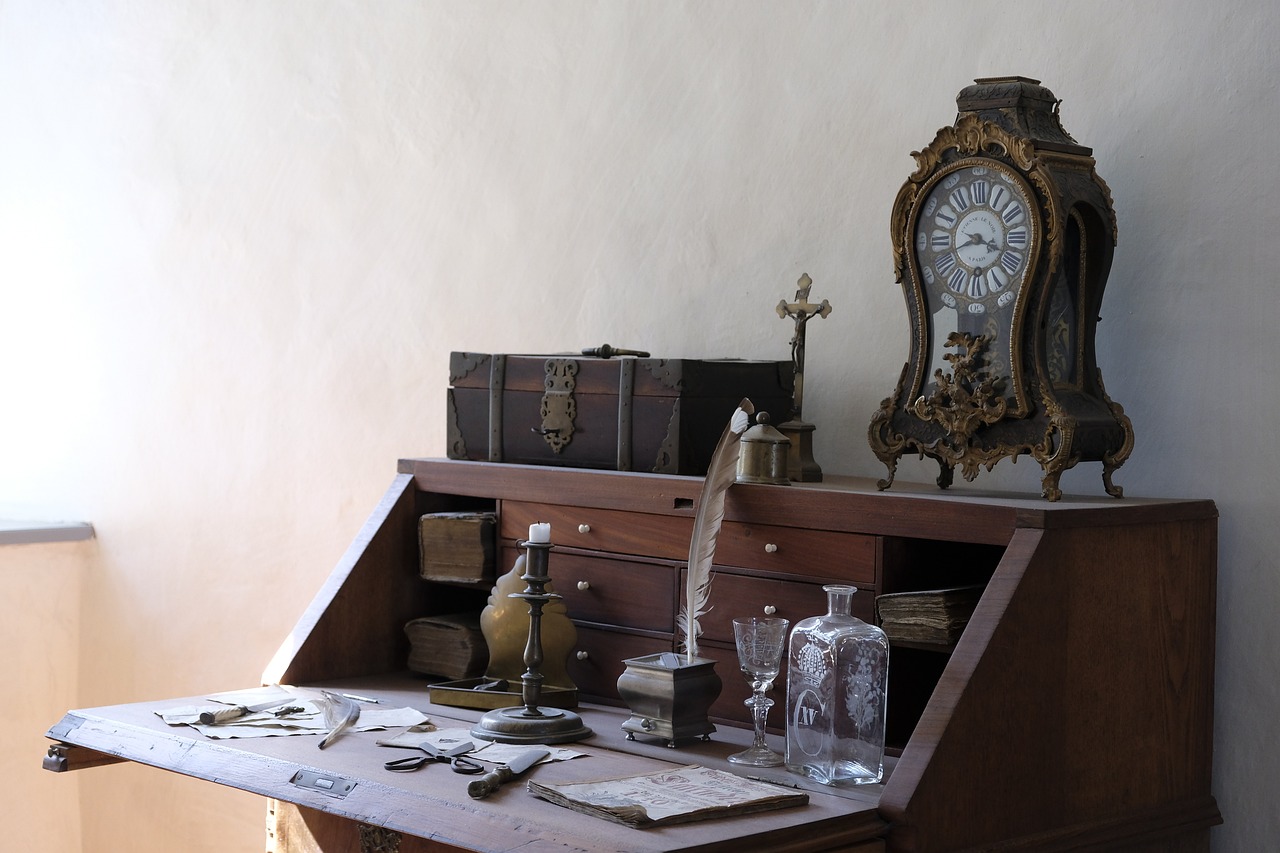
Installing the Clock Mechanism
Installing the clock mechanism is arguably one of the most critical steps in crafting your wooden clock. It’s like the heartbeat of your creation, ensuring that time ticks away accurately and beautifully. Before diving into the installation process, it’s essential to understand the different types of clock mechanisms available and how they can influence your design. Generally, there are two main types of clock movements: quartz movements and mechanical movements. Quartz movements are battery-operated and offer precision, while mechanical movements are powered by winding and add a classic touch to your clock.
When selecting a mechanism, consider the size and weight of your clock hands, as well as the overall design. A larger clock might require a robust mechanism that can support heavier hands, while a smaller clock can get away with a lighter quartz option. Once you've chosen the right mechanism, it's time to get your hands dirty. Begin by measuring the diameter of the hole you need to drill in the back of your clock face. Most clock mechanisms have a standard shaft length, so ensure that the hole is deep enough to accommodate it.
Here’s a simple step-by-step guide to help you install the clock mechanism:
- Step 1: Drill a hole in the center of your clock face using a drill and the appropriate-sized drill bit.
- Step 2: Insert the clock mechanism through the hole from the back of the clock face.
- Step 3: Secure the mechanism by tightening the nut that comes with it, ensuring it’s snug but not overly tight to avoid damaging the wood.
- Step 4: Attach the clock hands, starting with the hour hand, followed by the minute hand, and finally the second hand, if applicable. Make sure they are aligned correctly and do not touch each other.
- Step 5: Finally, insert the battery (if using a quartz movement), set the time, and your clock is ready to shine!
It’s important to take your time during this process, as a well-installed mechanism not only ensures accuracy but also enhances the overall aesthetic of your wooden clock. A little patience goes a long way! Remember, if you’re ever in doubt, refer to the specific instructions that come with your clock mechanism, as different brands may have unique requirements.
Q: Can I use any clock mechanism for my wooden clock?
A: While you can technically use any mechanism, it’s best to choose one that matches the size and weight of your clock hands and fits the aesthetic of your design.
Q: How do I know if my clock mechanism is working properly?
A: After installation, set the time and observe the clock for a few minutes. If the hands move smoothly without any obstruction, your mechanism is functioning correctly.
Q: What if my clock hands are too heavy for the mechanism?
A: If your clock hands are too heavy, consider upgrading to a more robust mechanism designed to support heavier components. Always check the specifications before purchasing.
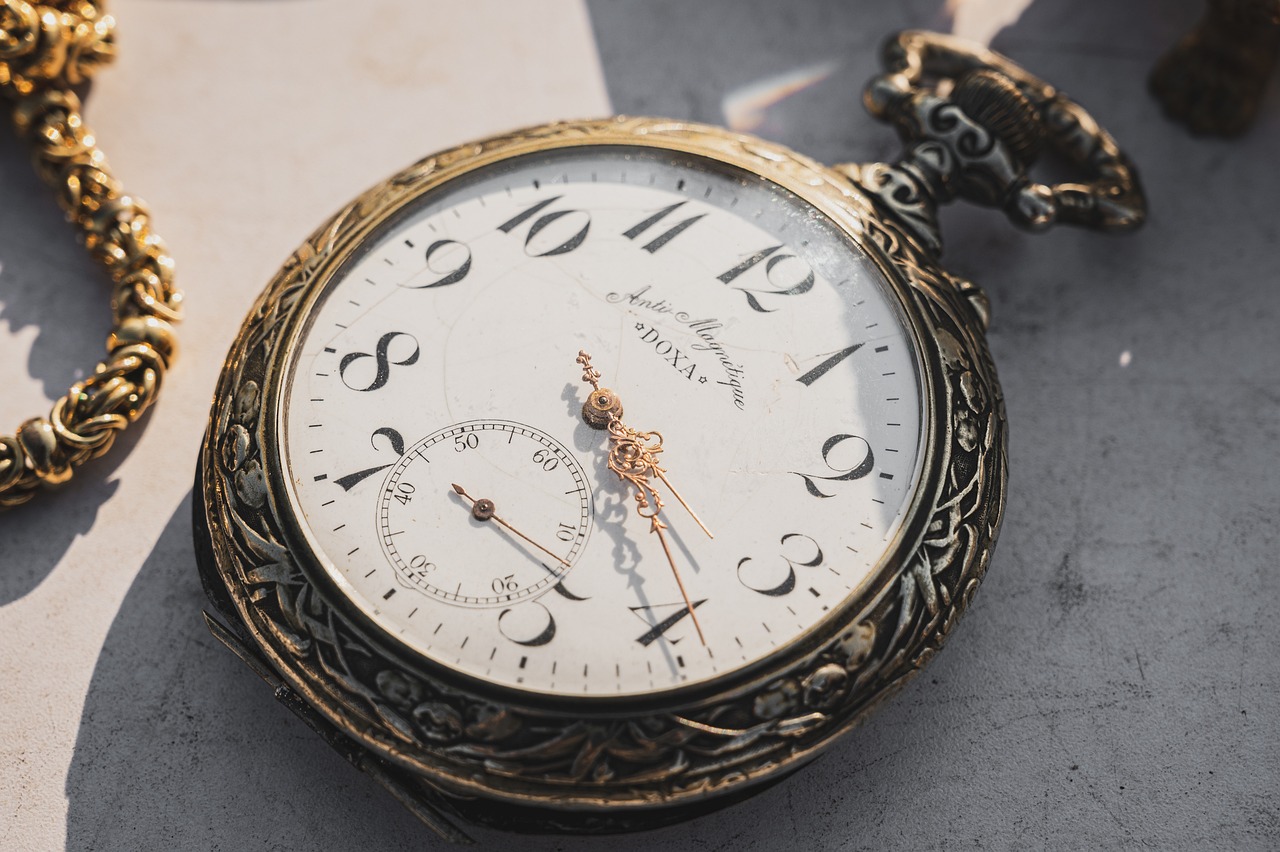
Finishing Touches
When it comes to crafting a wooden clock, the can truly make or break your masterpiece. Think of it like the icing on a cake; it not only adds aesthetic appeal but also enhances the overall experience of your creation. After all the hard work you've put into selecting the right wood, designing your clock, and assembling the pieces, it’s time to give your wooden clock that final polish. But what exactly does that entail? Let’s dive into some essential finishing techniques that will elevate your clock from ordinary to extraordinary!
First off, you’ll want to consider the type of finish you prefer. There are several options available, each with its own unique characteristics. For instance, oil finishes penetrate the wood and enhance its natural beauty, bringing out the grain and color. On the other hand, varnishes provide a hard protective layer that can withstand wear while offering a glossy look. If you’re aiming for a more rustic feel, a wax finish might be your best bet, as it gives a soft, natural sheen.
Here’s a quick comparison of some popular finishes:
| Finish Type | Pros | Cons |
|---|---|---|
| Oil Finish | Enhances grain; easy to apply | Requires frequent reapplication |
| Varnish | Durable; great protection | Can be tricky to apply evenly |
| Wax Finish | Natural look; easy to apply | Less durable; needs regular upkeep |
Once you’ve chosen your finish, preparation is key. Make sure to sand your clock thoroughly to create a smooth surface. Use progressively finer grits of sandpaper, starting with a coarser grit and working your way down to a fine one. This step is crucial because it helps the finish adhere better and results in a more professional-looking end product. Remember, patience is your friend here. Rushing through the sanding process could lead to a less-than-ideal finish.
After sanding, it’s time to apply the finish. If you’re using an oil finish, a clean cloth or brush works wonders—just remember to apply it in thin coats to avoid drips. For varnishes, a brush or foam applicator can help achieve a smooth application. Be sure to follow the manufacturer’s instructions regarding drying times and the number of coats needed. Typically, two to three coats will do the trick, but always allow adequate drying time between applications.
Lastly, don’t forget about the final inspection. Once your clock is finished and dried, take a moment to admire your work. Check for any imperfections or areas that may need touch-ups. If everything looks good, you can add any additional embellishments, such as decorative elements or a personalized engraving, to make your clock truly one-of-a-kind.
In conclusion, the finishing touches are more than just a step in the clock-making process; they are an opportunity to express your creativity and craftsmanship. By carefully selecting your finish, preparing your wood, applying it with care, and adding those personal touches, you can create a stunning wooden clock that not only tells time but also tells a story.
- What type of wood is best for making a clock? - Hardwoods like oak, maple, and cherry are excellent choices due to their durability and beautiful grain.
- How do I choose the right clock mechanism? - Consider the size of your clock and the style you want. Quartz mechanisms are popular for their accuracy and ease of use.
- Can I use paint as a finish? - Yes, paint can be used, but it will cover the natural grain of the wood. If you want to showcase the wood, opt for stains or oils instead.
- How long does the finish take to dry? - Drying times vary by product, but generally, allow at least 24 hours between coats and a few days for the final finish to cure.
Frequently Asked Questions
- What type of wood is best for making wooden clocks?
When it comes to crafting wooden clocks, the type of wood you choose can make a huge difference. Hardwoods like oak, maple, and cherry are popular choices because they are durable and have beautiful grain patterns. If you're looking for something more affordable, softwoods like pine can work too, but keep in mind they may not last as long.
- Do I need special tools to make a wooden clock?
Absolutely! While you can get by with basic woodworking tools, having the right equipment can really enhance your clock-making experience. Essential tools include saws, drills, and sanders. Hand tools offer precision, while power tools can speed up the process. It's all about finding the right balance for your project!
- How can I ensure safety while working on my clock?
Safety should always be your top priority in woodworking! Make sure to wear protective gear like goggles and earplugs. Keep your workspace clean and organized to minimize accidents. Familiarize yourself with the tools you’re using, and always follow the manufacturer’s safety guidelines to keep your hands and fingers safe.
- What design considerations should I keep in mind?
Designing your clock can be one of the most fun parts of the process! Think about the style you want to achieve—modern, rustic, or something entirely unique. Sketching your ideas out beforehand can help you visualize your clock and avoid costly mistakes. Don’t forget to incorporate personal touches that reflect your personality!
- How do I install the clock mechanism?
Installing the clock mechanism is like giving your creation a heartbeat! First, choose a mechanism that fits your clock design. Once you have it, follow the instructions carefully to ensure it’s securely attached. Remember, the mechanism is crucial for keeping time accurately, so take your time with this step!
- What finishing techniques can I use to enhance my wooden clock?
The finish can really make your wooden clock pop! Options like varnish, oil, or wax can protect the wood while enhancing its natural beauty. Sanding before applying the finish is key to achieving a smooth surface. Experiment with different techniques to find the one that best showcases your craftsmanship!















